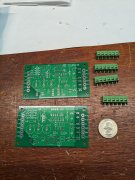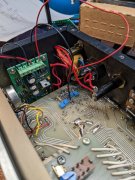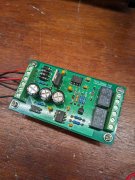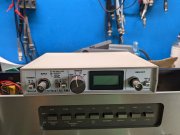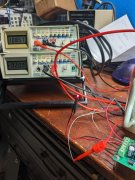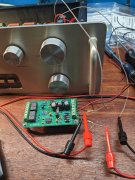George I built a Sound Card Interface / AC RMS voltmeter from Pete Millett a few years ago. used it with computer for out put, spectrum analysis and cross hatch distortion measurements. He has really good designs.
I do not use it now that I have an Audio Precision. So if anyone is interested I’ll let it go.
Pete says:


Most of us DIY audio types have been using PC sound cards to make measurements. There are excellent, inexpensive programs available to do test and measurement of audio equipment available. Personally I use
Audiotester. If you've been around my web site you've seen FFT plots generated that way.
What has always been lacking is a decent interface between the sound card and the device under test (DUT for you geeks). There has been much discussion in forums like DIYaudio about this, and many proposals and circuits shown, but so far I've not seen anything implemented.
The problem with sound cards is that they are designed for fixed line-level inputs and outputs. Depending on the card this may be between 1V and 5V RMS maximum. They are also not tolerant of overloads - accidentally deliver 20V into your sound card input and you will most likely be looking for a new sounds card.
The other issue I have with sound cards is one of calibration. I know it is possible to calibrate the levels, but I have not had very good luck doing it. So, unless you have some other type of voltmeter, it's hard to get an absolute level measurement from a sound card. This is important for many things, like measuring the output power of an amplifier.
So what we need is a magic box with the following characteristics:
- Able to accept a wide range of voltages and scale them for the sound card input
- Survive overvoltage inputs without damage
- Provide AC-coupling to protect from DC voltages (like plate voltage on a tube stage)
- Provide a reasonably high impedance input, preferably with some ability to make floating measurements
- Buffer and amplify the sound card output, with very low distortion and low output impedance
- Provide a calibrated true-RMS AC voltage measurement

